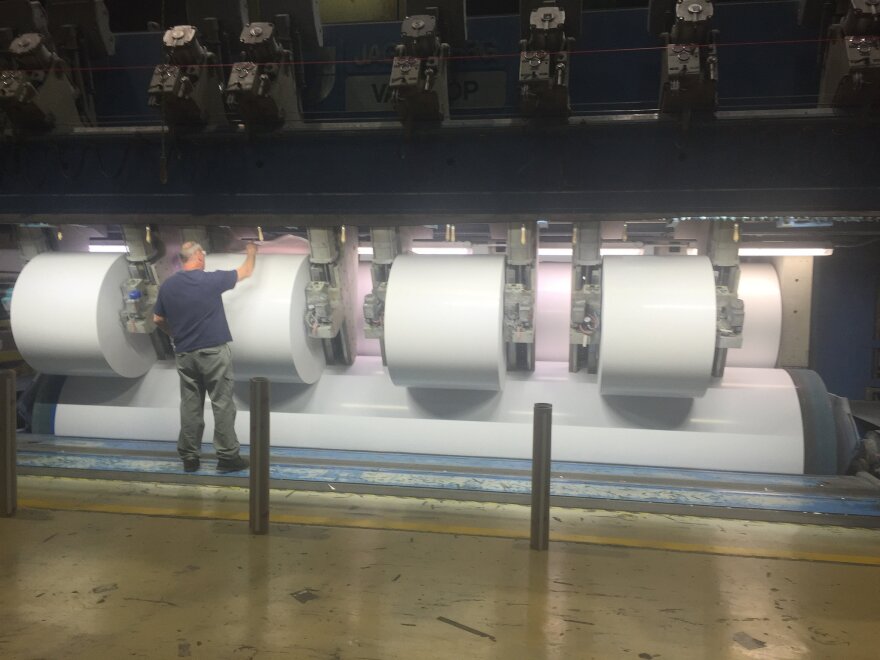BANGOR, Maine — The future of papermaking in Maine will be the subject of a daylong summit here Tuesday.
It's been a rough couple of years for the industry. Mills in Maine have declared bankruptcy, shed more than 1,500 jobs and closed entirely.
So far though, Sappi Paper, which operates mills in Westbrook and Somerset, has been able to avoid the large setbacks that have hit others in the industry.
Sappi's mill, along Route 201 in Skowhegan, is the seventh largest papermaking facility in the world. The company, headquartered in South Africa, purchased the mill in 1994 — a few years, notes Tony Ouellette, before the Internet began to slowly eat away at consumers' need for paper products.
"Sappi Somerset is not immune to that lack of demand across the industry," says Ouellette, the mill's managing director.
Nor is the mill immune to another big challenge facing papermakers: rising wood costs.
"Our logging capacity, for the industry, has gone down," says Donna Cassese, who heads up fiber strategy for Sappi's mills in Maine.
So the mill, and its competitors in Maine, are fighting over a limited supply of wood, made even more scarce by the huge surge in firewood and pellet use across the state. Sappi Somerset also struggles with high energy costs.
But so far, the mill has managed to navigate these challenges without shutting down paper machines and laying off some of its more than 700 employees in Skowhegan. Robert Rice, a professor of wood science at the University of Maine in Orono, says there are several reasons why.
"In times when business is bad, they take the time to modernize and reinvest where they can," he says.
Mill manager Tony Ouellette leads me to the finishing and shipping area of the mill, the last stage of the papermaking process.
"This really high technology piece of equipment — it can handle rolls up to three tons," he says, as rolls of high-quality, catalog-grade paper move down a conveyor and stop in front of a orange robotic arm shaped like a half moon. The arm nudges the rolls onto a lift, then upends them
"From a prone position into a stand up position, so a clamp truck can come grab it, and the clamp truck can transport it to its appropriate location," Ouellette explains.
This $1.5 million piece of machinery, installed in September, is an example of the kind of consistent reinvestment into the mill that's allowed Sappi to thrive despite adverse market conditions. Since 1994, the company has poured more than $400 million into the facility.
Cassese says many of the improvements are driven by the company's team of 50 research and development scientists who work across the street from the Sappi mill in Westbrook.
"Who are working on both innovating products, as well as making the products that we already have, making them more efficient, making them lower cost," she says.
Over time, the intense focus on research and development has helped Sappi come up with a product line that is more diverse than those of some competitors who've struggled. It includes specialty papers such as grease-resistant sheet, used in pet food bags and labels for canned soup and other food products.
"They know how to run the business and they have pretty solid management at all of their mills," Rice says.
He says Sappi's sheer size is another big advantage. It can export from the U.S. to Europe or from Europe to the U.S., depending on market conditions. The company, he says, also goes out of its way to work with large landowners on sustainable forestry practices.
Rice says these strengths are ultimately what allow the company to operate successfully, even as the demand for paper continues to fall.


